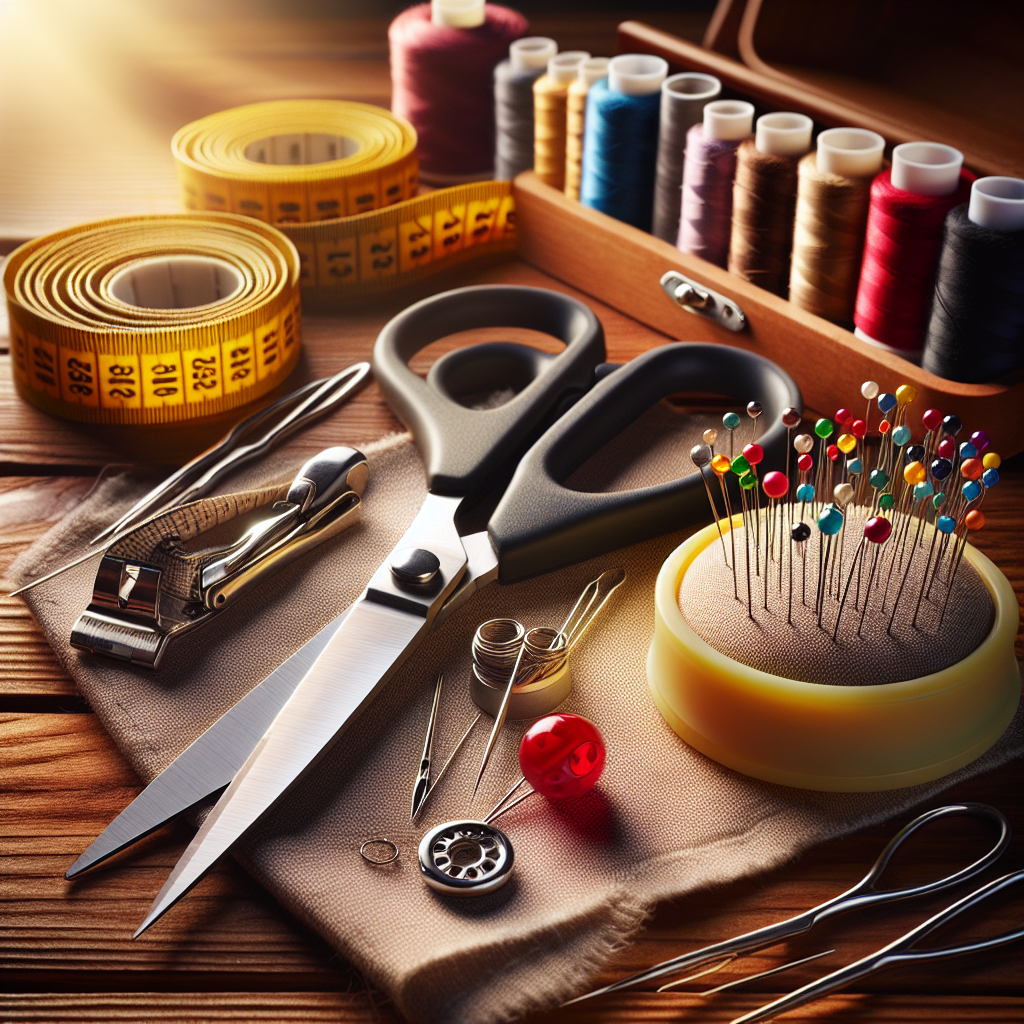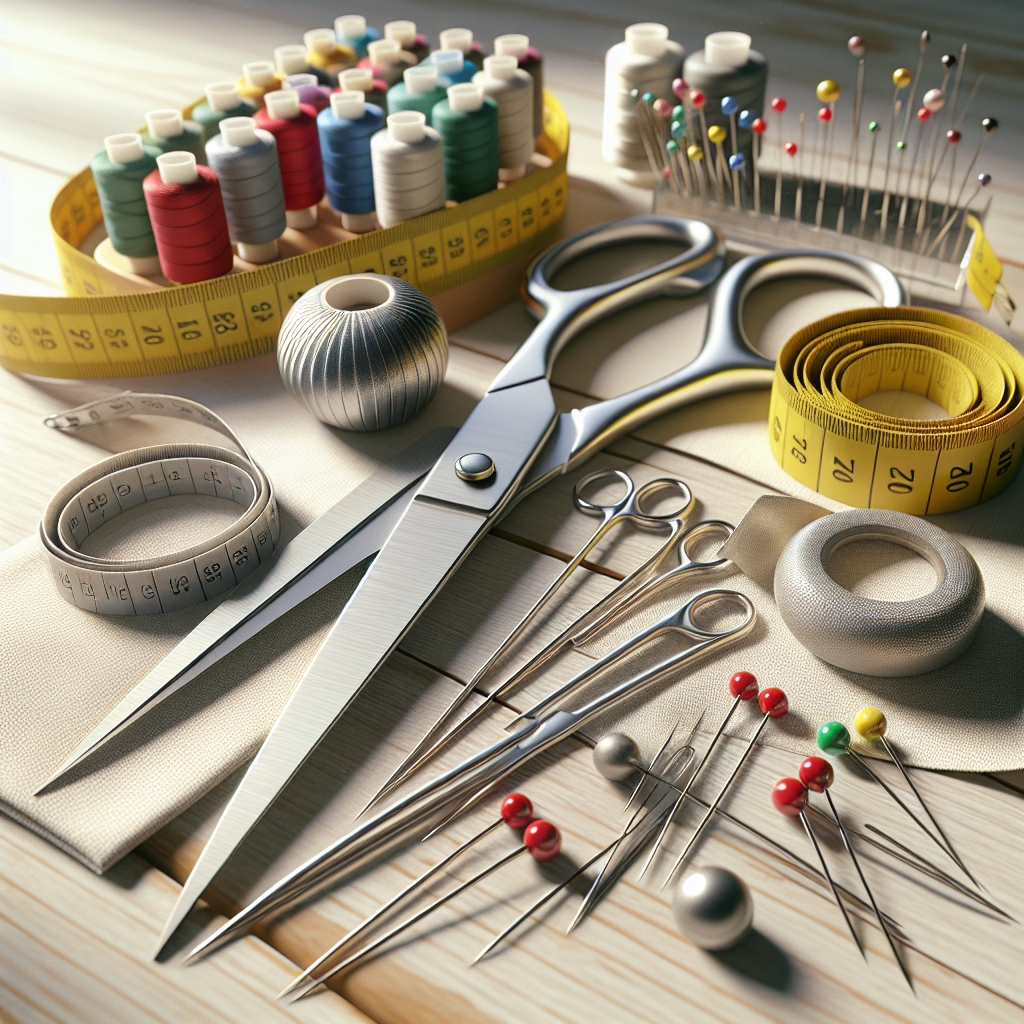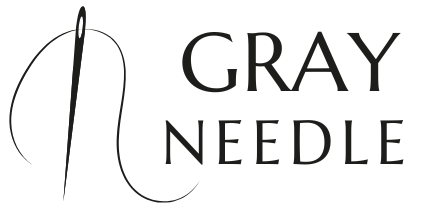Before diving into your first sewing project, it’s crucial to familiarize yourself with the basic sewing tools that will aid you in your crafting journey. Having the right tools not only enhances your sewing experience but also ensures that your projects turn out beautifully.
Here are some essential sewing tools every beginner should have:
- Fabric Scissors: Invest in a good pair of fabric scissors that are sharp and comfortable to use. They will provide clean cuts and make your work more efficient.
- Measuring Tape: Accurate measurements are vital in sewing. A flexible measuring tape helps you measure fabric and body dimensions easily.
- Seam Ripper: Mistakes happen! A seam ripper will help you quickly remove stitches without damaging your fabric.
- Needles: Different projects may require different types of needles. It’s good to have a variety on hand, including universal, ballpoint, and embroidery needles.
- Pins and Pin Cushion: Use pins to hold fabric pieces together while sewing. A pin cushion keeps them organized and easily accessible.
These tools are not just accessories; they are fundamental to your success as a beginner. Exploring and understanding how to use each tool will build your confidence and skill in sewing. Visit our website to learn more and get started today! Click here.
Choosing the Right Fabric for Your Projects

Choosing the right fabric is a critical step in ensuring the success of your sewing projects. The fabric you select can greatly influence the final look, feel, and functionality of your item. As a beginner, understanding the different types of fabrics and their properties will help you make informed decisions.
Here are some key factors to consider when selecting fabric:
- Fabric Type: Familiarize yourself with various fabric types such as cotton, linen, silk, and polyester. Each fabric has distinct characteristics and is suited for different projects. For instance, cotton is versatile and great for quilting, while silk is ideal for elegant garments.
- Weight: The weight of the fabric affects how it drapes and behaves. Lightweight fabrics are perfect for flowy dresses, while heavier fabrics work well for structured garments. Always check the fabric’s weight before purchasing.
- Pattern and Texture: Consider the pattern and texture of the fabric. A busy print may not be suitable for intricate designs, while solid colors can provide a classic look. Textured fabrics can add depth and interest to your projects.
- Stretch: Some fabrics have inherent stretch, such as knits, which can be comfortable for fitted clothing. Knowing whether your project requires stretch can guide you in choosing the right fabric.
By taking the time to research and experiment with different fabrics, you’ll enhance your sewing skills and ensure your projects come out just as you envision. Happy sewing!
Essential Techniques Every Beginner Should Learn

As a beginner in the world of sewing, mastering essential techniques will lay a strong foundation for your skills and boost your confidence. Here are some fundamental techniques that every aspiring sewer should learn:
- Threading the Machine: Understanding how to properly thread your sewing machine is crucial. This includes knowing how to wind the bobbin and thread the needle correctly. Always refer to your machine’s manual for specific instructions.
- Straight Stitching: The straight stitch is the most basic stitch and forms the backbone of many sewing projects. Practice sewing straight lines on scrap fabric to get comfortable with maintaining even tension and speed.
- Backstitching: This technique secures the start and end of your stitches, preventing them from unraveling. Learning how to backstitch is essential for creating durable seams.
- Seam Allowance: Understanding seam allowance is vital for accurate cutting and sewing. Most patterns will indicate the required seam allowance, so familiarize yourself with measuring and marking it on your fabric.
- Pressing: Pressing your seams as you sew can make a significant difference in the quality of your finished project. Using an iron to flatten seams and edges creates a polished look.
- Finishing Techniques: Learn basic finishing techniques such as zigzag stitching or serging to prevent fraying edges. This not only enhances the durability of your garment but also provides a neat finish.
By incorporating these essential techniques into your sewing practice, you’ll be better equipped to tackle more complex projects in the future. Each technique you master will contribute to your overall growth as a sewing enthusiast.
Tips for Setting Up Your Sewing Space Efficiently
Creating an efficient sewing space is crucial for both productivity and enjoyment in your sewing projects. Here are some practical tips to set up your sewing area effectively:
- Choose the Right Location: Select a space that is well-lit and has enough room for your sewing machine and materials. Natural light is ideal, but if that’s not possible, consider investing in good task lighting.
- Organize Your Tools: Use containers, shelves, or pegboards to keep your sewing tools organized. Keeping essential items like scissors, pins, and threads within reach will save you time and make your sewing experience more enjoyable.
- Invest in a Comfortable Chair: Since you’ll spend a lot of time sitting, choose an ergonomic chair that offers good support. This will help reduce fatigue and discomfort during long sewing sessions.
- Designate Cutting and Ironing Areas: If space permits, set aside areas specifically for cutting fabric and ironing. This keeps your main sewing area uncluttered and allows for efficient workflow.
- Keep a Designated Trash Bin: Having a small trash bin nearby to dispose of fabric scraps, threads, and other waste will keep your workspace tidy and prevent clutter from building up.
- Utilize Vertical Space: Maximize your sewing space by using vertical storage solutions such as wall-mounted shelves or storage racks. This helps to keep the floor area clear and provides easy access to materials.
By thoughtfully setting up your sewing space, you’ll create an environment that fosters creativity and efficiency, allowing you to focus on your projects and enjoy the sewing process.
Common Mistakes Beginners Make and How to Avoid Them

As you embark on your sewing journey, it’s essential to be aware of common pitfalls that many beginners encounter. Recognizing these mistakes can help you avoid frustration and improve your skills more quickly. Here are some frequent errors and tips on how to steer clear of them:
- Skipping the Pre-Wash: Many beginners overlook the importance of pre-washing fabric. Fabrics can shrink or bleed when washed, which can ruin your project. Always pre-wash your fabric to ensure it maintains its shape and color.
- Ignoring the Pattern Instructions: While it might be tempting to dive right in, ignoring the pattern instructions can lead to costly mistakes. Take the time to read through the instructions thoroughly before starting. Familiarize yourself with any unfamiliar terms or techniques.
- Not Using the Right Needle: Using the incorrect needle for your fabric type can cause skipped stitches or damage your material. Make sure to choose the appropriate needle for your project, whether it be a universal, ballpoint, or specialty needle.
- Neglecting to Measure Accurately: Accurate measurements are critical in sewing. Take the time to measure yourself and your fabric correctly. Double-check your measurements before cutting to avoid unnecessary waste.
- Forgetting Seam Allowances: Seam allowances are often specified in patterns, but beginners sometimes overlook them. Make sure to account for seam allowances when cutting your fabric to ensure a proper fit.
- Rushing the Process: Sewing can be a meticulous craft, and rushing through can lead to mistakes. Take your time, enjoy the process, and don’t hesitate to take breaks if you feel frustrated.
By being aware of these common mistakes and following these tips, you can enhance your sewing experience. Learning from others’ experiences is part of the journey, so embrace each project as an opportunity to grow!
Resources for Continued Learning and Inspiration in Sewing

Embarking on your sewing journey is just the beginning, and there are countless resources available to help you expand your skills and inspire your creativity. Whether you’re looking for tutorials, patterns, or a community to share your passion, these resources can be invaluable:
- Online Tutorials and Courses: Websites like YouTube and dedicated sewing platforms offer a plethora of video tutorials ranging from basic techniques to advanced projects. Consider enrolling in online courses that provide structured learning.
- Sewing Blogs: There are numerous sewing blogs where enthusiasts share their projects, tips, and tricks. These blogs often feature step-by-step guides and personal stories that can motivate you and provide fresh ideas.
- Social Media Groups: Join sewing communities on platforms like Facebook and Instagram. Engaging with fellow sewing enthusiasts can provide support, inspiration, and a space to share your work.
- Books and Magazines: Investing in sewing books and magazines can provide you with a wealth of information on techniques, projects, and the latest trends in the sewing world. Look for publications that resonate with your style and skill level.
- Local Sewing Classes: If you prefer hands-on learning, consider taking local sewing classes. Many fabric stores and community centers offer workshops that cater to various skill levels.
Don’t forget to explore the vast array of resources we have on GrayNeedle.com. Our community is here to support you, providing inspiration and guidance as you continue to develop your sewing skills. Visit our website to learn more and get started today! Click here.

